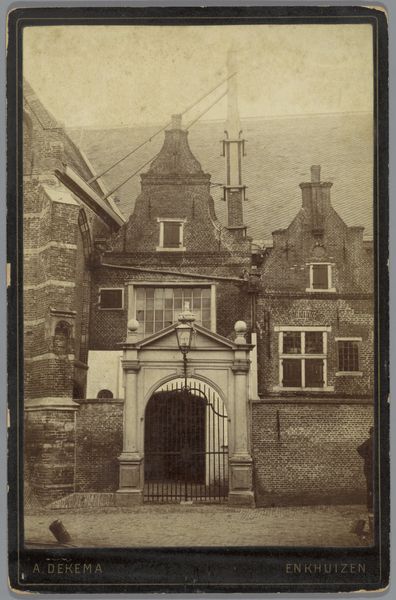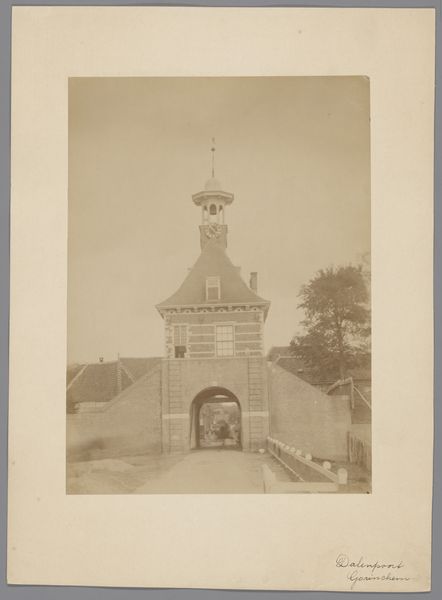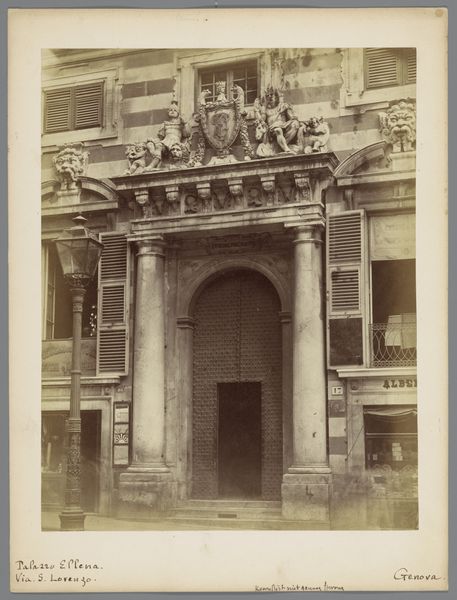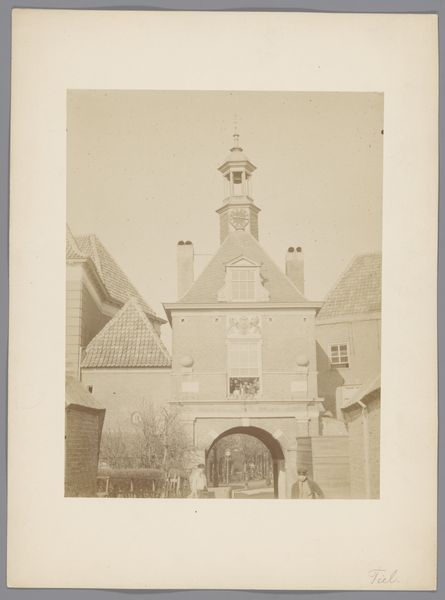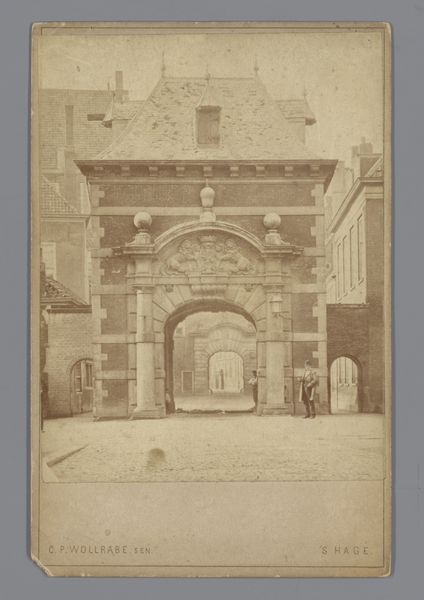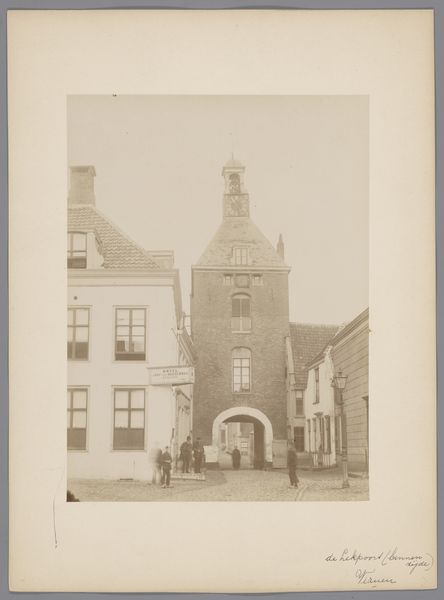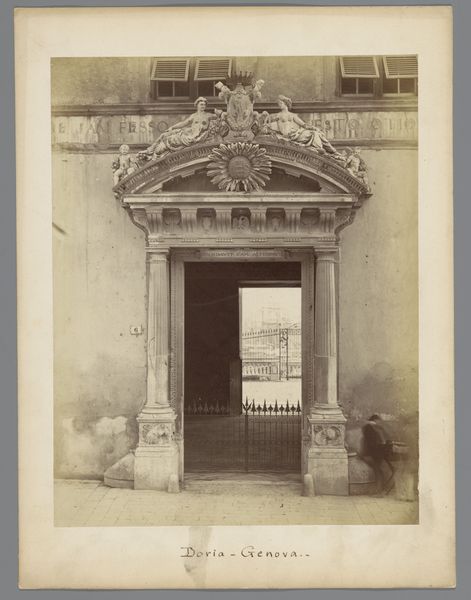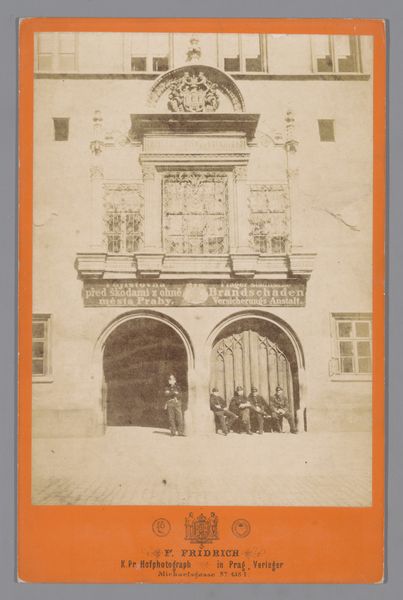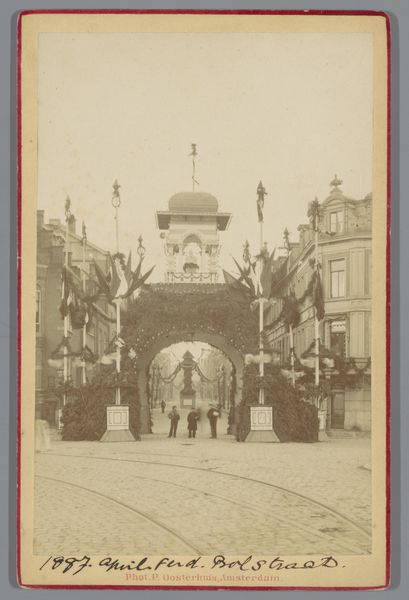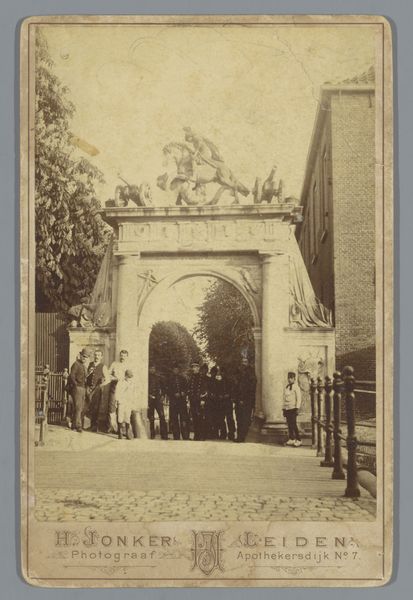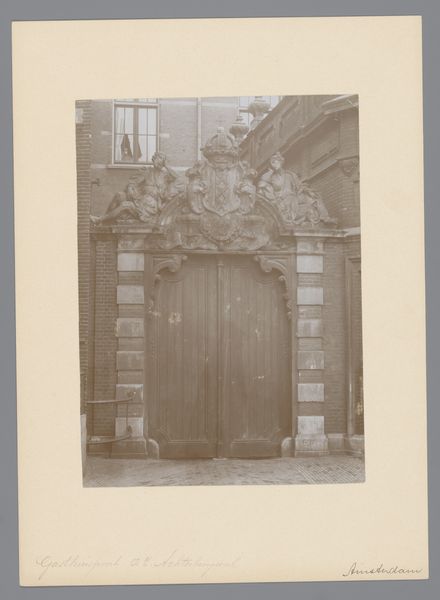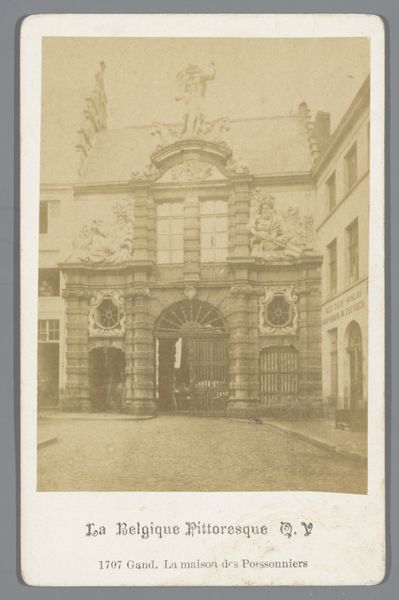
Gezicht op de poort van het Sint Anthonygasthuis in Groningen 1858 - 1903
0:00
0:00
print, photography, architecture
#
dutch-golden-age
# print
#
photography
#
coloured pencil
#
19th century
#
cityscape
#
watercolor
#
architecture
Dimensions: height 167 mm, width 109 mm
Copyright: Rijks Museum: Open Domain
Editor: So, this is Johannes Gerardus Kramer’s “Gezicht op de poort van het Sint Anthonygasthuis in Groningen,” created sometime between 1858 and 1903. It's a photograph, and I'm struck by the stark simplicity of the subject – a doorway. What's your read on this piece? Curator: From a materialist perspective, this image raises some interesting questions. It’s a photograph of a building, seemingly straightforward, but consider the context. Photography was developing rapidly during this period, transitioning from a laborious, expensive process to something more accessible. How does that change our view of this seemingly mundane subject? Editor: I see what you mean. The ease of capturing the image changes its value, perhaps? Curator: Precisely! And what about the building itself? It's a gate of a former hospital. This building has specific implications about social structures, urban planning, and how society cared (or didn't care) for its less fortunate. Was Kramer drawn to the architecture, or was he documenting a particular social reality? Consider the labor involved in constructing this gate versus the ease with which it's photographed. Editor: That's fascinating! It's almost like Kramer is using the photograph to make a statement about labor and societal values, isn't it? The contrast between the building materials of brick, stone, and timber, crafted with specialized and hard won experience, contrasts with the chemical processes of early photographic materials. Curator: Exactly! Furthermore, consider the distribution of the photograph. Was it widely circulated, or mainly consumed by the wealthy elite? The photograph becomes not just an image, but an object of consumption tied to class and social power. Editor: Wow, I hadn’t thought about that. Seeing it as an object within a social and economic framework changes everything. Thanks! Curator: My pleasure! Hopefully this encourages us to always to think critically about art as an artefact of process and production.
Comments
No comments
Be the first to comment and join the conversation on the ultimate creative platform.
